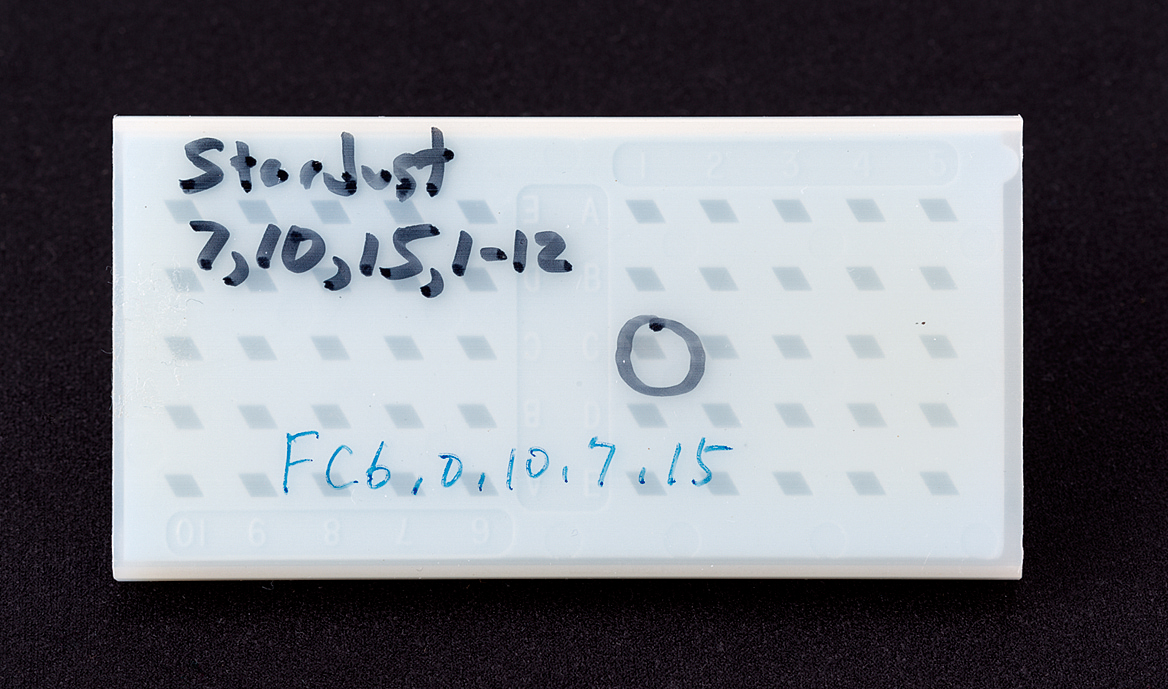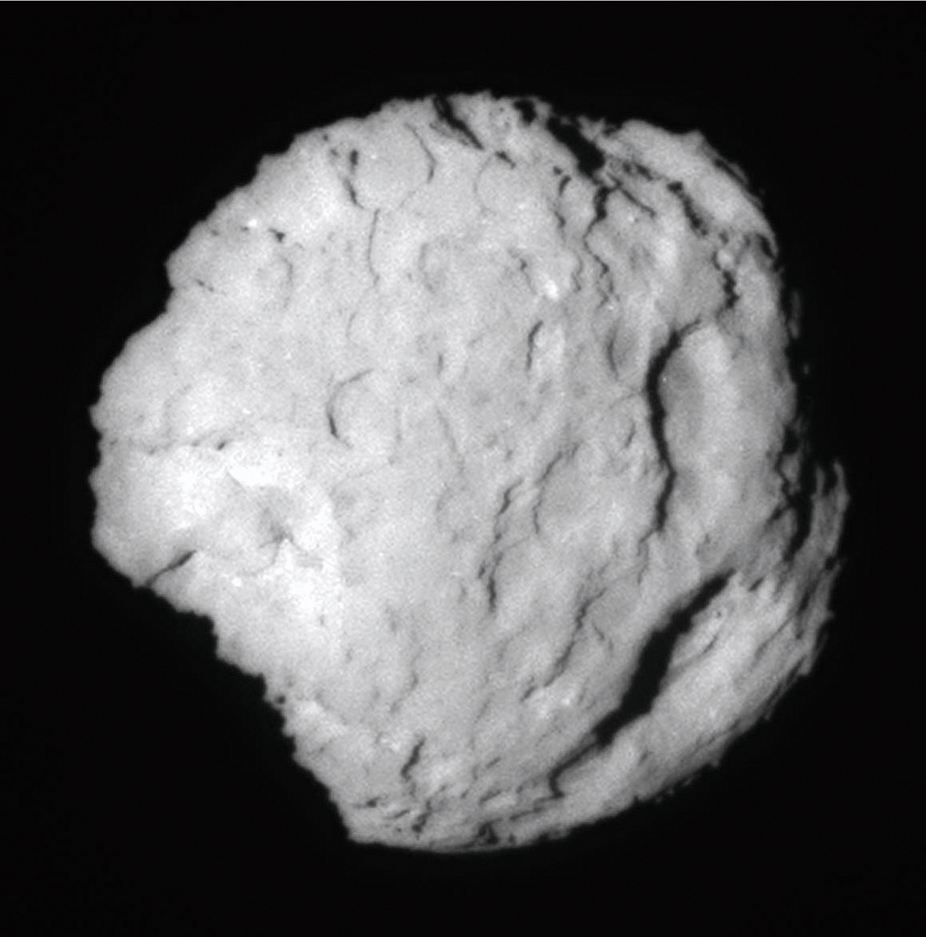B5
Dynamic transportation in the solar
system recorded in cometary particles
NASA’s cometary spacecraft, Stardust, was launched in 1999 to a short-period comet, 81P/Wild 2. The spacecraft observed the coma (i.e., the nebulous envelope around the nucleus of the comet) in 2004 and captured and returned fine-grained particles emitted from the comet to the Earth in 2006. These particles, which are stored at the NASA Johnson Space Center, are internationally distributed to researchers through public offering. The displayed sample is a thin sliced specimen for transmission electron microscope observation. Short-period comets are believed to have formed in the Kuiper belt (the outer region of the solar system beyond Neptune, which preserves primordial minerals and organic materials). They are thus important bodies from which to study the early history of the solar system. Contrasting with main-belt asteroids which are considered to be the parent bodies of most meteorites, Kuiper belt bodies are expected to yield information on the outer region of the solar nebula. Although Stardust returned only tiny particles (most nearing 30 μm), their analyses yielded many surprising results. These include: (1) chemical compositions approximating those of CI chondrites and which best compare to the Sun’s composition; (2) chondrules, which are ubiquitously observed among chondritic meteorites, sphere-shaped, smaller than 1 mm, composed of silicates, and considered to have experienced both vigorous heating processes which melt precursor materials and rapid cooling processes in the solar nebula; (3) wide-ranging chemical compositions including pyroxene and olivine; and (4) Ca and Al-rich refractory inclusions, similar to those widely observed among carbonaceous chondrites. These results are considered as evidences of a large-scale exchange of materials within the inner and outer solar nebula. (Takafumi Niihara)


